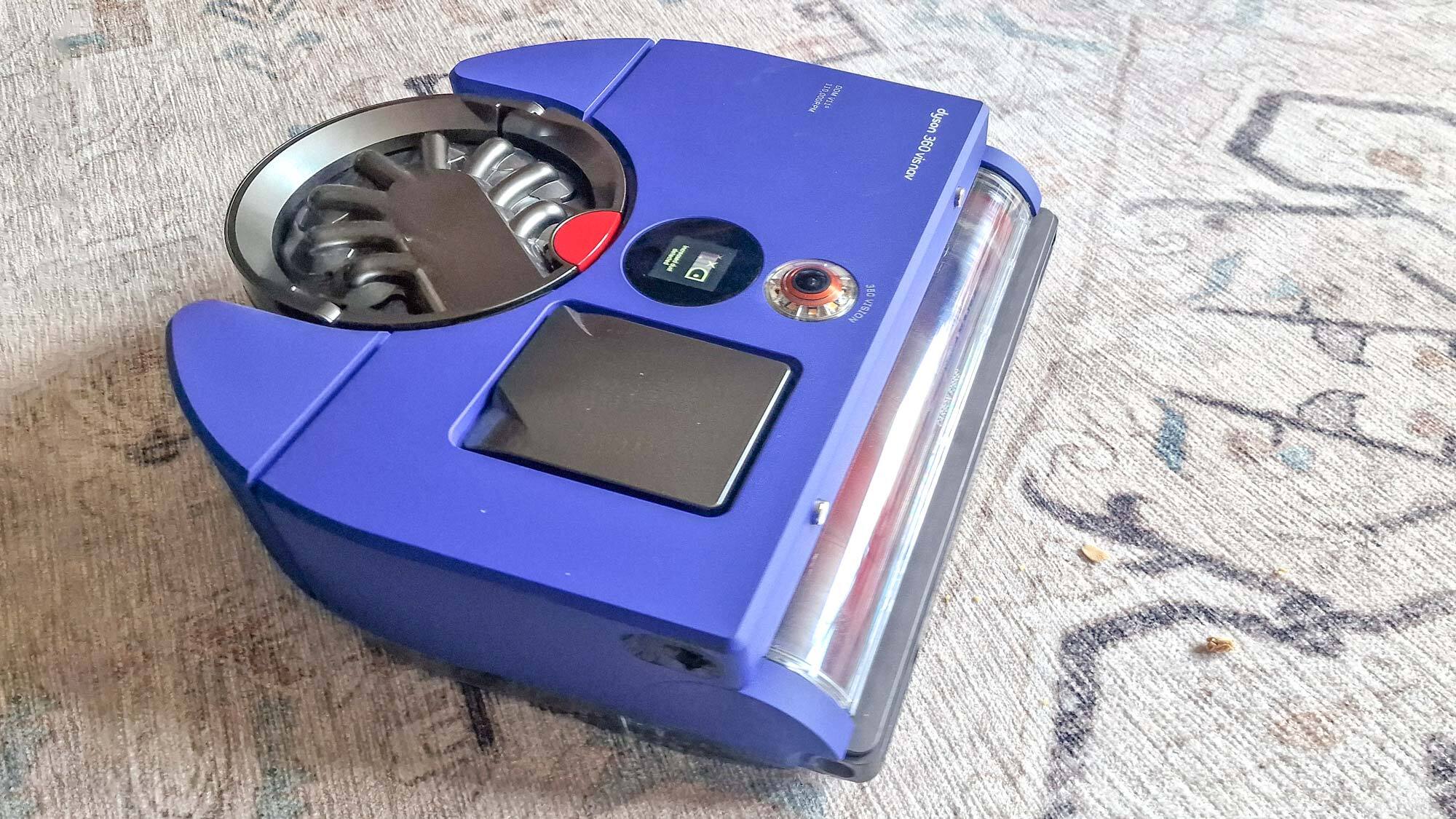
Overall cleaning performance: 92.1
Pet hair score: 89
Size: 13"L x 12.6"W x 3.9"H
Modes: Auto, Quick, Quiet, Boost
On board dustbin capacity: 0.57 liters
Smart home compatibility: App, Alexa, Google Assistant
Dyson claims its 360 Vis Nav has twice the suction of any other robot vacuum. It's a bold claim, but after months of testing, it's certainly the most powerful robot vacuum I've tried. With 65AW of suction and a motor that spins at 110,000rpm, the Vis Nav has pulled an upsetting amount of dust out of seemingly clean corners of my apartment, with a level of suction I'd usually find from the best vacuum cleaners on the market.
That's not the only thing that's impressed me with the 360 Vis Nav though. It's great at edge cleaning, easy to set up and control remotely, and comes with both on-board and remote instructions should you ever run into any mishaps. I had been using it for a few months before I started working on this review, so I'm very used to the day-to-day experience of owning and using this vacuum.
When I put the Vis Nav through its paces in our standardized robot vacuum tests, it excelled at picking up extra-fine debris, but it struggled with larger pieces. The issue wasn't that it couldn't pick them up, but that its suction was so strong that it ended up blowing larger debris out of its path from the vents at the side of the vacuum. My verdict? What this vacuum does, it does very well. But for the money, you can find alternatives that do a lot more, including self-emptying or mopping.
Dyson 360 Vis Nav review: Price and availability
Released in early 2024, the Dyson 360 Vis Nav retails for $1,199.99 / £1,399.99. It's the third of Dyson's attempts to break into the robot vacuum market, and by all accounts the most successful.
The Dyson site claims that the Vis Nav "generates two times the suction of any other robot vacuum". It also highlights the Vis Nav's triple-action brush bar, which is designed to work across all floor types. It's available in one colorway and can be bought directly from Dyson or select retailers.
To give some context on where the Vis Nav sits in the market, you could opt for the Roborock S7 MaxV Ultra for only $100 more at $1,299. Unlike the Dyson, this vacuum comes with self-emptying features as well as a water tank that will refill its onboard mopping tank and clean this mop after use.
Dyson 360 Vis Nav review: Design
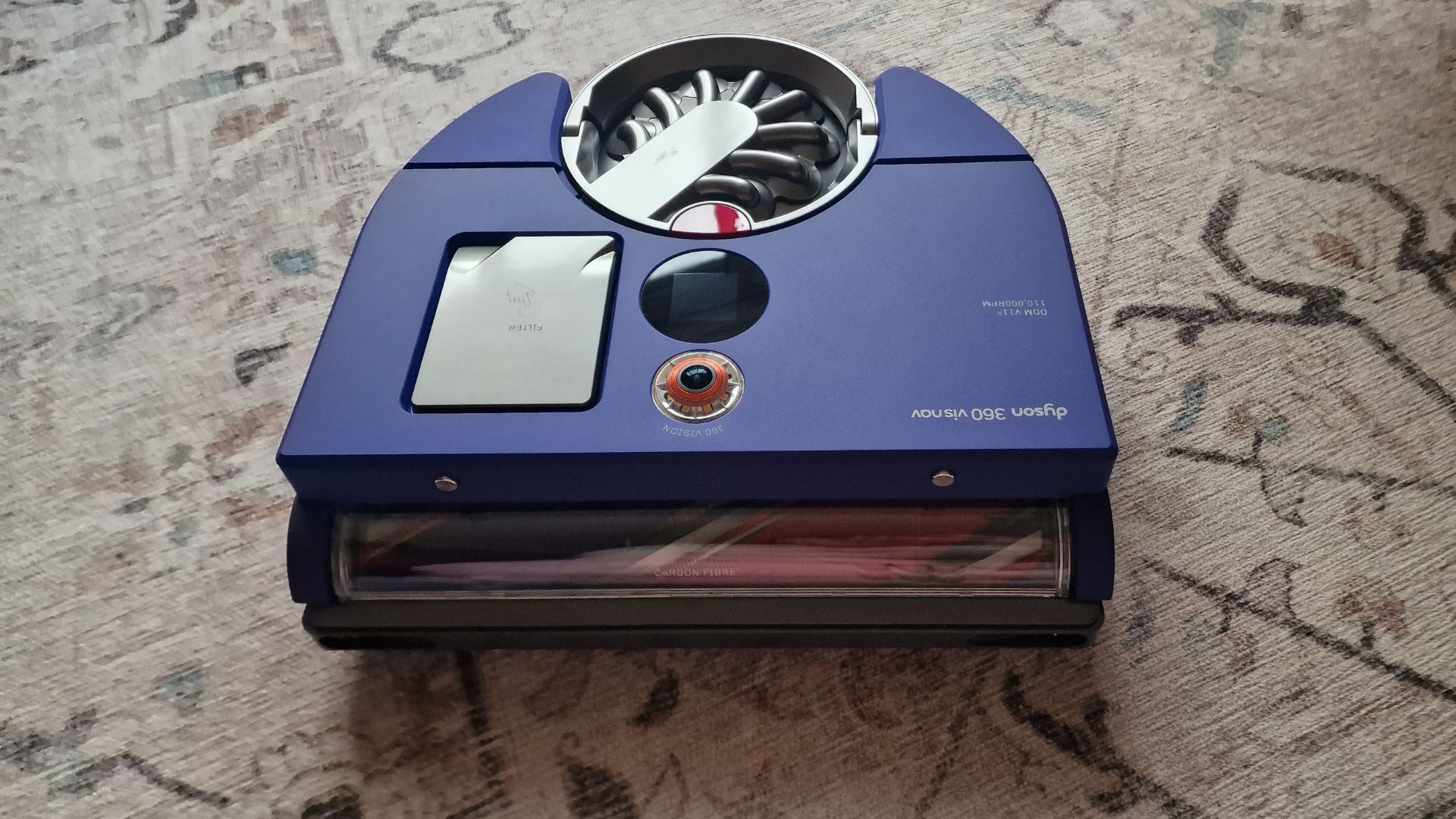
When I first saw the Vis Nav, the first thing I noticed was its bright blue color. It's creamy, vibrant and matte. Far from discreet, but very Dyson and similar to the color of the Dyson AirWrap. The second thing I noticed was its D-shaped body. This is designed to reach into corners more easily than most round robot vacuums. Paired with the extending side duct that can reach under counters and skim even the far corners of your room, the Vis Nav makes the most of its 12.5-inch diameter for edge-to-edge cleaning.
The Vis Nav is 4 inches tall, 12.9 inches long, and 12.5 inches wide. The vacuum comes with a discreet charging dock, and thanks to the lack of self-cleaning or emptying features, it can slot just about anywhere in your home without causing too much disruption.
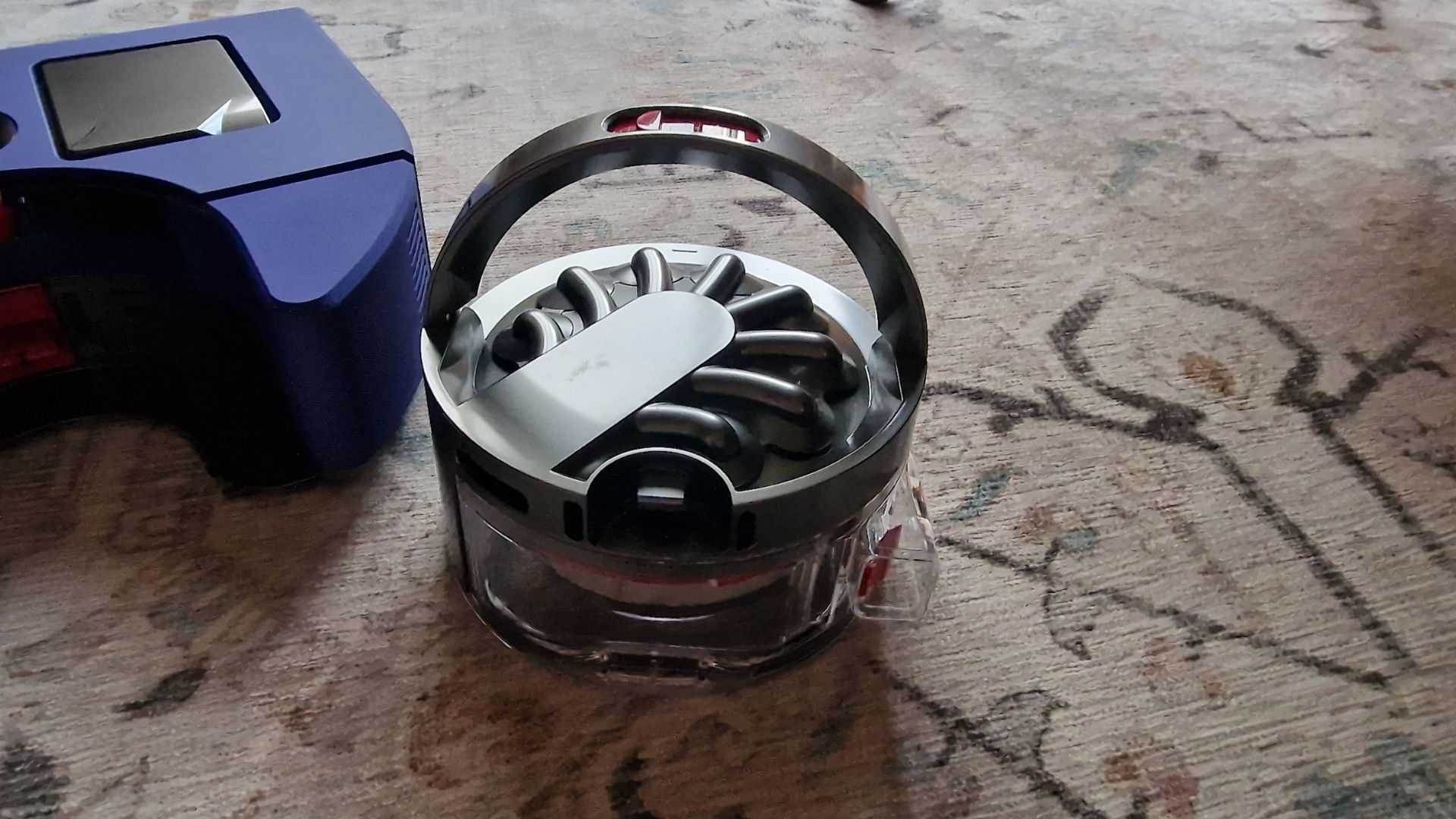
One of the neatest features is the Vis Nav's dustbin. It pops out and slots back into place easily, and can be opened away from you to eject its contents directly into the bin without creating a dust cloud. The bin has a similar look and design to many of Dyson's vacuums, and it's a good way to navigate a bagless design that won't leave you pulling clumps of hair and other debris from your dustbin.
This vacuum can detect dust levels, and it details these using a color-coded map after each clean. After a while in a regular cleaning routine, it even starts to predict your dust levels. Despite putting the Vis Nav on a daily clean cycle, it still picks up a troubling amount of dust from my hard floors and carpets, and correctly identifies areas of heavy footfall where I'd expect there to be higher levels of debris. Due to its high level of suction, the Vis Nav kicks up a strong current of air from its side vents. Thankfully this doesn't spread dust particles back into the room, because the whole-machine HEPA filtration traps dust and, according to Dyson, "seals in 99.99% of particles as microscopically small as 0.1 microns."
Dyson 360 Vis Nav review: Vacuuming performance
Most robot vacuums trace around the outside of a room before working in lines across the floor. By contrast, the Dyson works somewhat haphazardly in getting its bearings of the center of the room, and then going around the borders of your space with its side ducts to make sure it's not missed anything. Cleaning looks a lot more intuitive when you map out your room, but regardless, it gets the job done and doesn't seem to skip any spots unless it simply can't reach them.
In our standardized tests, the Dyson 360 Vis Nav did a great job on small debris and pet hair, but struggled a little more when picking up larger debris (cereal).
When picking up kitty litter, the Dyson achieved an outstanding score of 96.5%, meaning it only missed a few grains. That's not the best of the robot vacuums we've tested — that prize goes to the Roomba s9+ which scored 100% on hard floors for kitty litter.
The Dyson also did a good job on hair, picking up 82% of the hair on hard floor. It fell victim to its own powerful suction, as the side vents blew some hair out of the way before the vacuum had the chance to reach it. It struggled slightly more with cereal for the same reason — a few cheerios were scattered out of reach around the room by the side vents on the Dyson 360.
The Dyson 360 Vis Nav was stronger on carpets than it was on hard floors, possibly because there was more grip to prevent debris from blowing out of its path. Its deep suction was also incredibly apparent when it picked up ultra-fine dust in every test, despite the fact that this wasn't what we were testing for.
Considering we vacuumed this area of carpet three times, the fact that it continued to pull up deep-rooted fine dust particles on every test was impressive. It picked up 96.2% of kitty litter, coming second only to the equally-expensive Roborock S7 MaxV Ultra, and it performed similarly in our cereal tests, only missing a single cheerio from the center of the room. The Vis Nav was also stronger on hair when it came to carpets, leaving only 4% behind.
Dyson 360 Vis Nav review: Setup, app and mapping

I've tested a handful of robot vacuums over the years, and some of them caused so much trouble that it worked out faster for me to break out my stick vacuum and do the job for myself. Thankfully, the Dyson 360 Vis Nav falls in the time-saving camp. I've been using it on nearly a daily basis for about three months, and it's only needed my help a couple of times.
The first was when it gobbled up my laptop charging wire, and the second time it attempted to pick up a lego-sized piece of debris which jammed the brush bar. Both times, the Dyson app notified me that my vacuum needed some assistance, and there was a video both on the control panel and on the app to show me how to fix the problem.
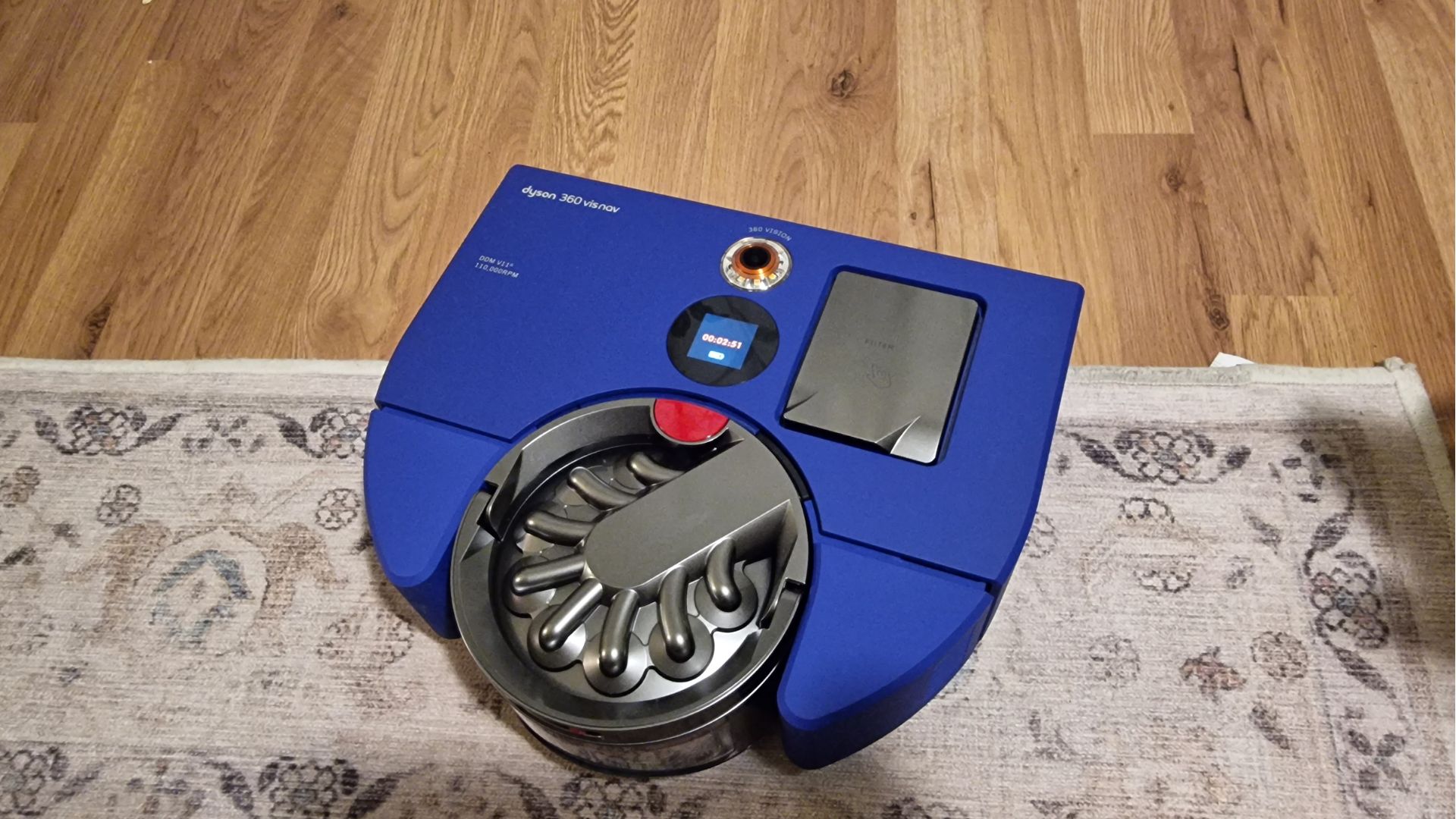
Let's talk controls. The Dyson has four cleaning modes: Boost, Quiet, Quick, and Auto. I've used all of them, but Auto is the one I opt for most days. This automatically adjusts suction based on the level of debris the vacuum is working on, which is a smart use of its time and energy. Without quiet mode, you'll experience up to 76dB of noise when your vacuum switches into high gear. It is quite loud, but it's not a grating noise and I now barely notice it when I'm working from home during the Vis Nav's 10am clean.
The app is my preferred way of controlling the Vis Nav, but you can use the surprisingly interactive touchscreen control panel to set it up for one-off cleans. Using the Dyson app, you can set up different cleaning areas, set a schedule for cleaning times, types, days, and areas, and get guidance on how to get the most out of your vacuum. You can also check in remotely to see if your vacuum has run into any issues. I forgot to turn off my schedule when I went on vacation, and was able to disable my routine all the way from Italy.
Dyson 360 Vis Nav review: Verdict
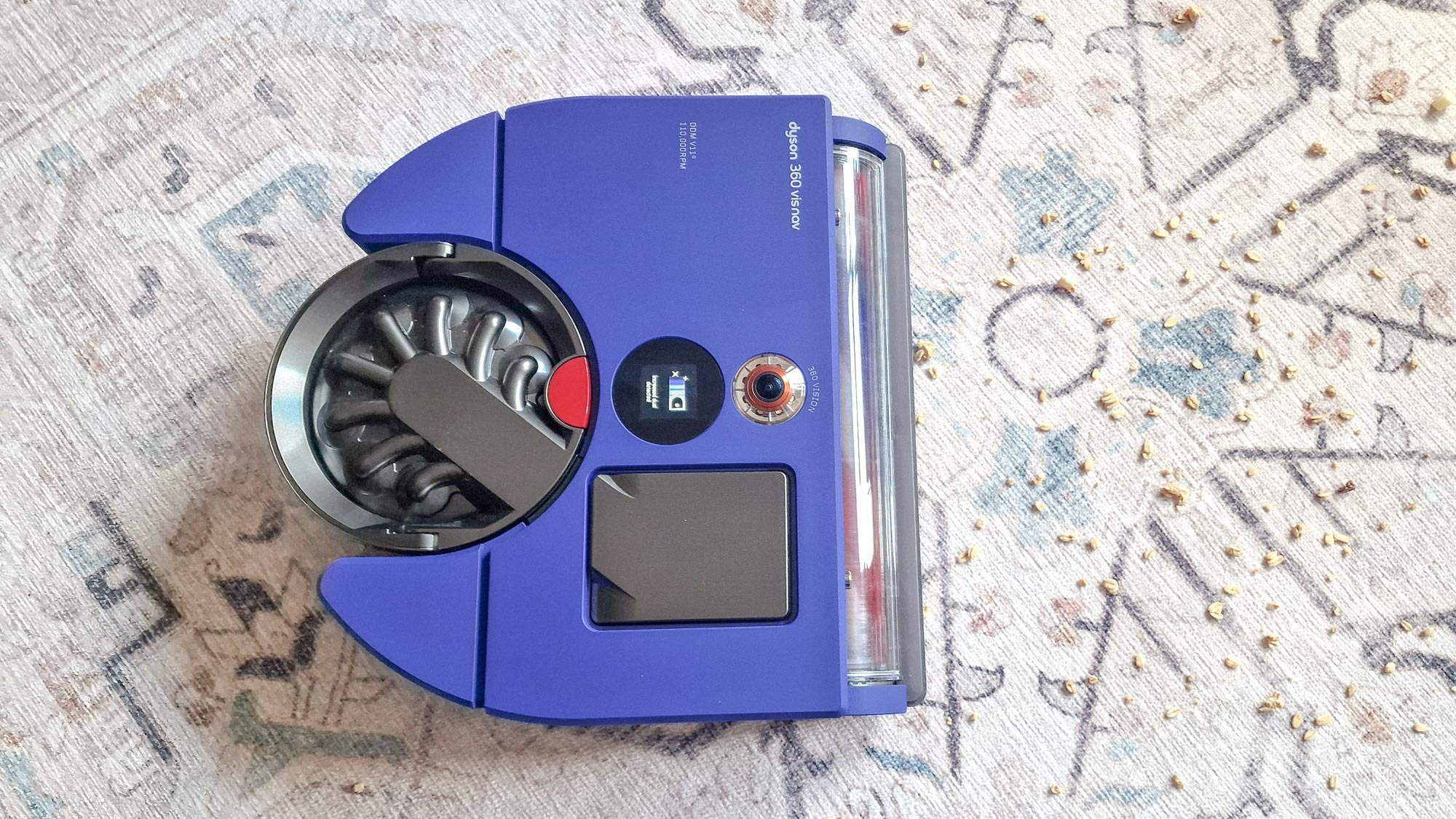
Dyson has clearly gone for a less is more approach with the 360 Vis Nav. It can't mop, it can't self-empty, it can't show live views of your home, and it can't self-clean. What it can do is seriously deep-clean your floors. Although it held its own in our tests, it was also a victim of its own success with its strong side vents blowing hair and cereal out of its own path.
As far as user experience is concerned, it doesn't offer the in-depth experience you'll find with the Roborock S7 MaxV Ultra or another D-shaped alternative, the iRobot Roomba s9+, but its attention to detail means you won't need to clean up after it by vacuuming the corners of your room, or worry about any allergens being kicked up in its wake. If you're not looking for a cheap robot vacuum and want something capable and easy to use, this is a dependable choice.







